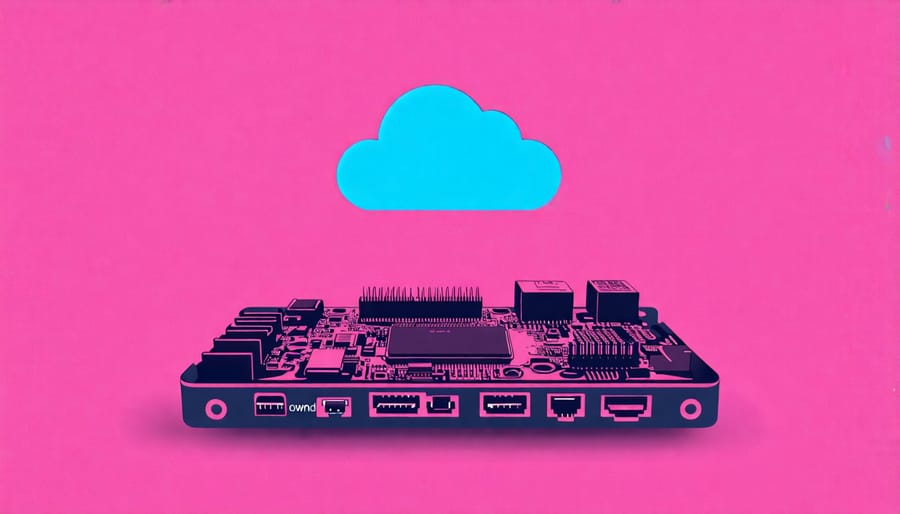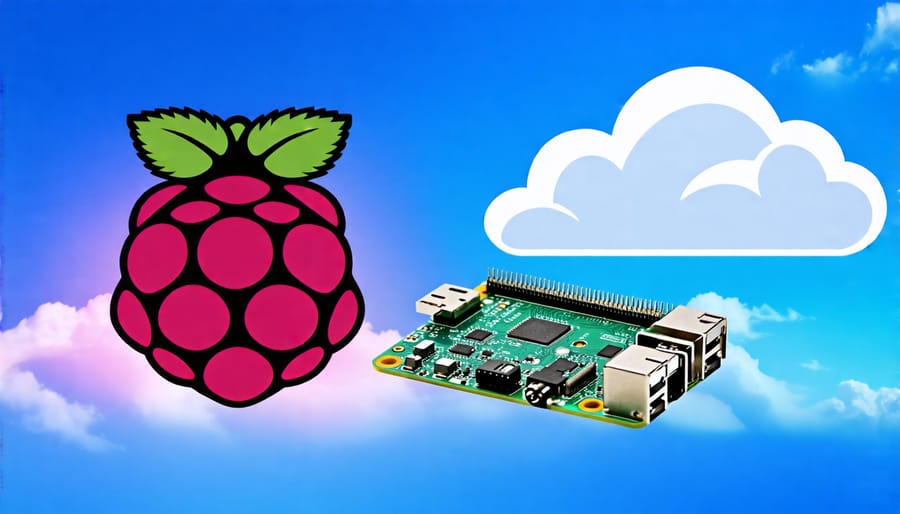Install OwnCloud on your Raspberry Pi by first ensuring your Raspberry Pi is set up with the latest Raspberry Pi OS. Use the terminal to update your packages with `sudo apt update && sudo apt upgrade`. Next, install Apache, PHP, and MariaDB by entering `sudo apt install apache2 php mariadb-server`. Secure your database using `sudo mysql_secure_installation` to set a root password and remove anonymous users. Download OwnCloud’s latest version from their official website, extract it, and move it to the Apache web root directory using `sudo cp -r owncloud /var/www/html/`. Set the correct permissions with `sudo chown -R www-data:www-data /var/www/html/owncloud`. Finally, complete the setup via the web interface, ensuring all required extensions are enabled and creating your admin account to start using your OwnCloud-powered Raspberry Pi server.
Understanding Raspberry Pi and OwnCloud
What is Raspberry Pi?
The Raspberry Pi is a compact, affordable computer that has captivated tech enthusiasts and hobbyists worldwide. Originally designed for educational purposes, it provides a versatile platform for various Raspberry Pi projects, from home automation to digital art. Its appeal lies in its accessibility and extensive support community, making it an ideal gateway for beginners to explore computing and electronics. Users can transform it into a personal server or media center, and it’s perfectly suited for setting up cloud storage solutions like OwnCloud, bringing powerful technology within easy reach.

What is OwnCloud?
OwnCloud is an innovative open-source software that allows you to create your own personal cloud storage solution. Unlike traditional cloud services that store your data on external servers, OwnCloud lets you host your data on hardware you control, providing an extra layer of security and privacy. Its functionality ranges from simple file sharing to complex collaborative tools, such as document editing, calendar, and contact management. The flexibility of OwnCloud makes it comparable to other cloud services like Google Drive or Dropbox, but with the advantage of tailoring the setup to suit your specific needs and preferences. For tech enthusiasts and hobbyists keen on using Raspberry Pi, OwnCloud offers an exciting opportunity to repurpose this affordable hardware into a dedicated cloud server. Setting up OwnCloud on a Raspberry Pi not only serves as an excellent hands-on project but also results in a fully functional and readily accessible cloud solution, empowering users to explore the capabilities of open-source software in a practical way.
Hardware and Software Requirements
Necessary Hardware
To set up your OwnCloud server on a Raspberry Pi, the recommended hardware includes a Raspberry Pi 4 Model B, which offers ample processing power and RAM (2GB to 8GB) for smooth operation. You’ll need a power supply unit for the Pi, preferably the official USB-C power adapter to ensure consistent performance. A microSD card (32GB or larger) serves as the primary storage for your operating system; ensure it’s high-speed for better read/write performance. Additionally, a reliable external hard drive or SSD will expand your local storage capabilities. Consider a sturdy case for physical protection and efficient heat management, and an Ethernet cable to facilitate a steady network connection.

Software Tools Needed
To set up OwnCloud on your Raspberry Pi, you’ll need a few essential software tools. Begin with the Raspberry Pi OS, a lightweight, Linux-based operating system optimized for Pi devices—available in both desktop and Lite versions, with the latter being perfect for headless setups. Next, install Apache or Nginx; these popular web server applications are vital for serving your OwnCloud files. Use MariaDB or MySQL for your database, which OwnCloud will use to store file metadata. Finally, ensure you have PHP installed, as OwnCloud requires it to run properly. Keep PHP updated to maintain security and compatibility.
Step-by-Step Installation Guide
Preparing the Raspberry Pi
To start setting up OwnCloud on your Raspberry Pi, you’ll first need to get the Raspberry Pi OS ready and set up the network. Begin by downloading the latest Raspberry Pi OS from the official Raspberry Pi website. Once downloaded, use a tool like Balena Etcher to flash this OS image onto a microSD card. Afterward, insert the microSD card into your Raspberry Pi and power it up. Connect a keyboard, monitor, and mouse to go through the initial configuration steps on the Raspberry Pi. During the setup, ensure to enable SSH for remote access which will be crucial later on.
Next, connect your Raspberry Pi to the internet. You can use either an Ethernet cable for a stable connection or configure the built-in Wi-Fi. Make sure your Raspberry Pi is set to receive a static IP address to avoid any connection issues later. With these initial steps completed, your Raspberry Pi will be well-prepared to install and host OwnCloud, allowing you to dive into configuring your private cloud storage.
Installing OwnCloud
To install OwnCloud on your Raspberry Pi, begin by preparing your Raspberry Pi with the Raspbian or Raspberry Pi OS, which you can download from their official website. Once your OS is set up, ensure your system is updated by opening the terminal and running the commands `sudo apt-get update` and `sudo apt-get upgrade`.
Next, we need to install Apache, PHP, and other necessary packages. Use the following command in your terminal: `sudo apt-get install apache2 mariadb-server libapache2-mod-php7.3 openssl php-imagick php7.3-common php7.3-curl php7.3-gd php7.3-mysql php7.3-mbstring php7.3-xmlrpc php7.3-intl php7.3-json php7.3-ldap php7.3-zip php7.3-xml php7.3-apcu`. This sets up the environment needed for OwnCloud.
Once installed, download OwnCloud. You can do this by navigating to the OwnCloud download page and copying the download link for the latest version. Use `wget` in the terminal to download it, for example: `wget https://download.owncloud.org/community/owncloud-x.y.z.tar.bz2`.
After downloading, extract the files using `tar -xjf owncloud-x.y.z.tar.bz2`. Move the extracted OwnCloud directory to the web root using `sudo mv owncloud /var/www/`. Ensure the web server can write to the directory with the command `sudo chown -R www-data:www-data /var/www/owncloud/`.
Finally, complete the installation by accessing OwnCloud from your web browser. Enter `http://your_pi_ip_address/owncloud`. Follow the on-screen instructions to set up your admin account and connect to the database. Remember to secure your Raspberry Pi and OwnCloud environment by implementing strong passwords and enabling firewall rules. Enjoy your new personal cloud storage!
Verifying Installation and Setup
To ensure your OwnCloud setup on the Raspberry Pi is functioning correctly, start by launching a web browser on a device connected to the same network. Enter the Raspberry Pi’s IP address followed by “/owncloud” in the address bar. This should take you to the OwnCloud web interface. If a login page appears, your setup is correctly routed.
Create a new user account to test functionality. Log in with the credentials you’ve just set up. Once inside, try uploading a small file to verify storage capabilities. Access the file from another device to confirm syncing. If everything works seamlessly, you’re all set!
For further assurance, ensure your router’s firewall is properly configured to allow safe access from external networks if you plan on using OwnCloud remotely. Employ HTTPS for secure connections, which can be set up with Let’s Encrypt. By carrying out these checks and configurations, you’ll verify a secure and reliable OwnCloud environment on your Raspberry Pi.
Ensuring Security for Your Personal Cloud
Network Security Measures
When setting up OwnCloud on a Raspberry Pi, it’s essential to implement robust network security measures. Start by configuring a firewall to protect your Raspberry Pi from unauthorized access. Tools like UFW (Uncomplicated Firewall) can simplify this process. Additionally, ensure all connections to your OwnCloud server use HTTPS to encrypt data transmissions, protecting sensitive information. For HTTPS, you’ll need to set up SSL certificates, either through Let’s Encrypt for free certificates or another provider. Regularly update your system and OwnCloud to patch any security vulnerabilities. For more comprehensive tips, check out these Raspberry Pi security suggestions. Implementing these measures will significantly enhance the security of your personal cloud storage.

Data Protection Strategies
Securing your data when using OwnCloud on a Raspberry Pi is crucial to ensuring that your personal cloud is safely protected. Begin with encryption, which is a key method to safeguard data. By enabling server-side encryption in OwnCloud, you ensure that files are stored in an encrypted format. This means that even if unauthorized parties access your Raspberry Pi, they won’t easily interpret your data without the appropriate encryption key. Another effective strategy is implementing robust access controls. OwnCloud allows you to customize user permissions, ensuring that only authorized users can access specific files or folders. This level of control helps maintain privacy and prevents unauthorized data access. Additionally, consider using SSL/TLS certificates for secure data transfer; this encrypts the data being transmitted between your Raspberry Pi and the user’s device, preventing eavesdropping. Regular updates to the software and your Raspberry Pi OS are also recommended to patch vulnerabilities and add new security features. By taking these steps, you enhance the integrity and confidentiality of your data within your personal OwnCloud setup.
Conclusion
Embracing the power of a Raspberry Pi with OwnCloud opens up a world of personal cloud storage that champions both privacy and practicality. By setting up your own cloud, you reduce dependence on third-party services, thus reclaiming control over your data. This project not only satisfies the curiosity of tech enthusiasts but also serves as a perfect entry point for hobbyists eager to dive into hands-on Raspberry Pi innovations. It offers a rewarding blend of learning and application, where even beginners can easily master the setup process. Additionally, leveraging OwnCloud ensures that your files remain accessible and secure, while making digital collaboration seamless. So, whether you’re looking to safeguard sensitive data or simply want more autonomy over your digital life, diving into this project provides an exciting and fulfilling challenge. Start your journey towards enhanced digital privacy and begin exploring the potential of this dynamic duo—your data, your way!


